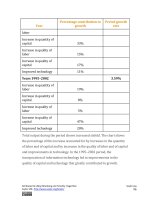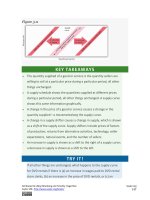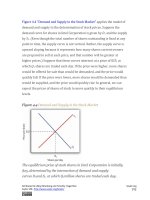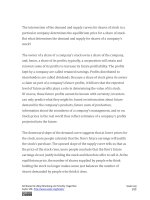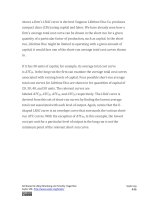Authors libby rittenberg 747
Bạn đang xem bản rút gọn của tài liệu. Xem và tải ngay bản đầy đủ của tài liệu tại đây (566.76 KB, 1 trang )
offer as a part-time instructor. For part-time teaching, then, the university
may be the only employer in town—and thus able to exert monopsony
power to drive the part-time instructor’s wage below the instructor’s MRP.
Monopsony in Other Factor Markets
Monopsony power may also exist in markets for factors other than labor.
The military in different countries, for example, has considerable
monopsony power in the market for sophisticated military goods. Major
retailers often have some monopsony power with respect to some of their
suppliers. Sears, for example, is the only wholesale buyer of Craftsman
brand tools. One major development in medical care in recent years has
been the emergence of managed care organizations that contract with a
large number of employers to purchase medical services on behalf of
employees. These organizations often have sufficient monopsony power to
force down the prices charged by providers such as drug companies,
physicians, and hospitals. Countries in which health care is provided by the
government, such as Canada and the United Kingdom, are able to exert
monopsony power in their purchase of health care services.
Whatever the source of monopsony power, the expected result is the same.
Buyers with monopsony power are likely to pay a lower price and to buy a
smaller quantity of a particular factor than buyers who operate in a more
competitive environment.
KEY TAKEAWAYS
In the monopsony model there is one buyer for a good, service, or
factor of production. A monopsony firm is a price setter in the market
in which it has monopsony power.
Attributed to Libby Rittenberg and Timothy Tregarthen
Saylor URL: />
Saylor.org
747
